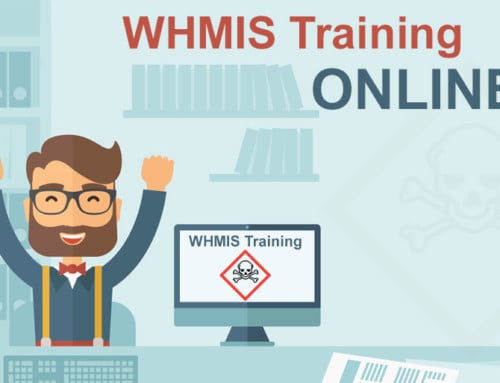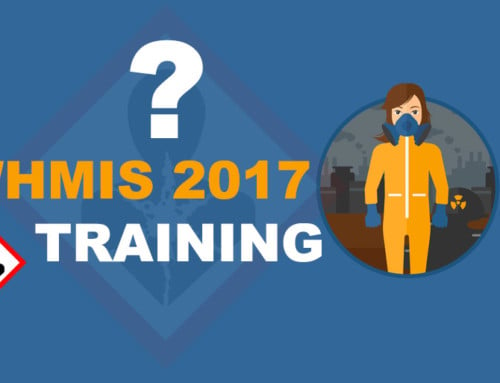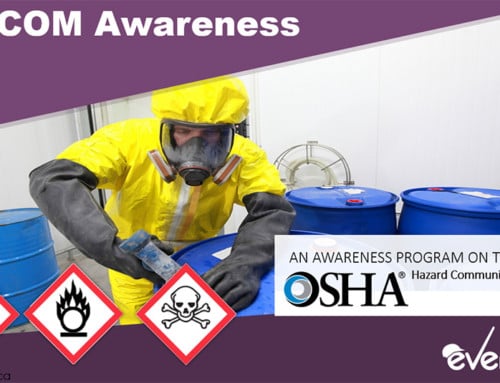What Does WHMIS Stand For?
If you’re Canadian, and you’ve been in the workforce for any length of time, it’s likely that you’ve heard the acronym WHMIS. Chances are that you probably have also taken WHMIS training at some point. If so, then you probably know exactly what WHMIS stands for.
So what exactly what does WHMIS stand for?
WHMIS Stands for…
WHMIS stands for Workplace Hazardous Materials Information System.
WHMIS is a Canada-wide system that was designed to provide employers and workers with information regarding hazardous products used in the workplace.
The initial development and implementation of WHMIS was extremely important. Prior to its implementation in 1988, workers were exposed to a higher risk of injury and illness in the workplace. This was due to incomplete, inconsistent or missing information about chemical products that they used or worked around. Often, employers and workers were completely unaware of the hazards associated with these products and were unable to take appropriate measures to protect their safety and health.
WHMIS ensures that information about hazardous products is provided via three primary methods that include:
- Labels that are affixed to the containers of hazardous products that quickly communicate hazards and precautionary measures to workers
- Safety Data Sheets, which contain specific details about a product including, but not limited to its properties, handling and storage procedures, first aid measures if exposed to the product, and other very important information
- Worker WHMIS education and training programs
Suppliers of hazardous products provide the safety data sheets and labels to employers, while employers are required to pass the information on to their workers through effective WHMIS education and training programs.
Canada Adopts GHS
In February 2015, Canada aligned WHMIS with the Globally Harmonized System of Classification and Labelling of Chemicals. This system is commonly referred to as GHS.
The GHS is an international initiative that was developed to promote global standardization to the classification and communication of hazardous chemicals. GHS standardizes how chemical hazards are classified and how the health and safety information associated with the products are communicated. This ultimately results in improved safety and health for employees who work with or in close proximity to hazardous products.
The aligned system is now referred to as WHMIS 2015, whereas the old system is referred to as WHMIS 1988.
Some of the main differences that resulted from the integration of GHS included changes to the symbols (now referred to as WHMIS 1988 Symbols) and the adoption of Safety Data Sheets. Basically, symbols have been replaced by images called Pictograms, and the nine-section Material Safety Data Sheets have been replaced with the new, 16-section Safety Data Sheets. Additionally, WHMIS 2015 labels look slightly different and include additional information that WHMIS 1988 labels did not include.
WHMIS Education and Training
One of the most significant, and important components of WHMIS is education and training.
Who’s responsible for WHMIS education and training?
Employers are the ones responsible for ensuring that their workers receive adequate WHMIS education and training so that they can protect themselves from hazardous products in the workplace. Even though this is the case, workers also have very important responsibilities that include participating in WHMIS training and using their knowledge of WHMIS to work as safety as possible.
Effective training programs typically are broken down into two parts; General Training (referred to commonly as “education”), and Workplace Specific training.
General WHMIS training covers topics such as the purpose of WHMIS, WHMIS legislation, how to read labels and materials safety data sheets, chemical information, and adverse health effects.
Workplace specific training includes information and instruction that is very specific to the employee’s actual workplace. This includes information on the safe handling, storage, and use of products used in the workplace, emergency procedures, required PPE, and specific safety precautions among other things.
So, What Does WHMIS Stand For?
Now, the next time you hear someone ask, “What does WHMIS Stand For?”, you can confidently explain the meaning to them and even contribute to their improved health and safety.






